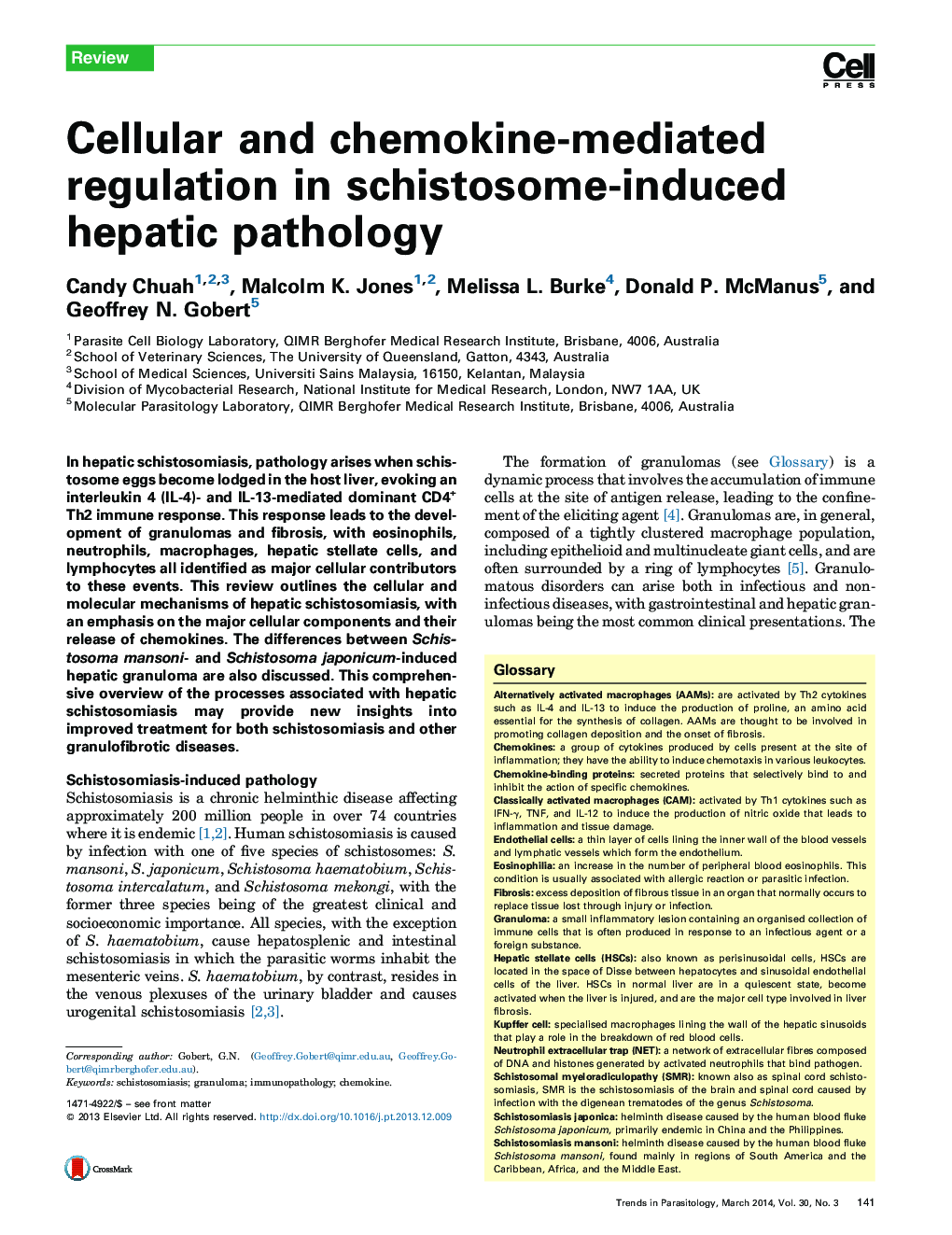| Article ID | Journal | Published Year | Pages | File Type |
|---|---|---|---|---|
| 3423119 | Trends in Parasitology | 2014 | 10 Pages |
•Hepatic granulomas induced by different schistosome species show unique cellularity.•Schistosome egg secretions selectively control granuloma cellular infiltration.•Chemokines regulate the migration of immune cells to schistosome-induced granuloma.•A promising strategy for neutrophils and macrophages in granulofibrotic treatment.
In hepatic schistosomiasis, pathology arises when schistosome eggs become lodged in the host liver, evoking an interleukin 4 (IL-4)- and IL-13-mediated dominant CD4+ Th2 immune response. This response leads to the development of granulomas and fibrosis, with eosinophils, neutrophils, macrophages, hepatic stellate cells, and lymphocytes all identified as major cellular contributors to these events. This review outlines the cellular and molecular mechanisms of hepatic schistosomiasis, with an emphasis on the major cellular components and their release of chemokines. The differences between Schistosoma mansoni- and Schistosoma japonicum-induced hepatic granuloma are also discussed. This comprehensive overview of the processes associated with hepatic schistosomiasis may provide new insights into improved treatment for both schistosomiasis and other granulofibrotic diseases.
